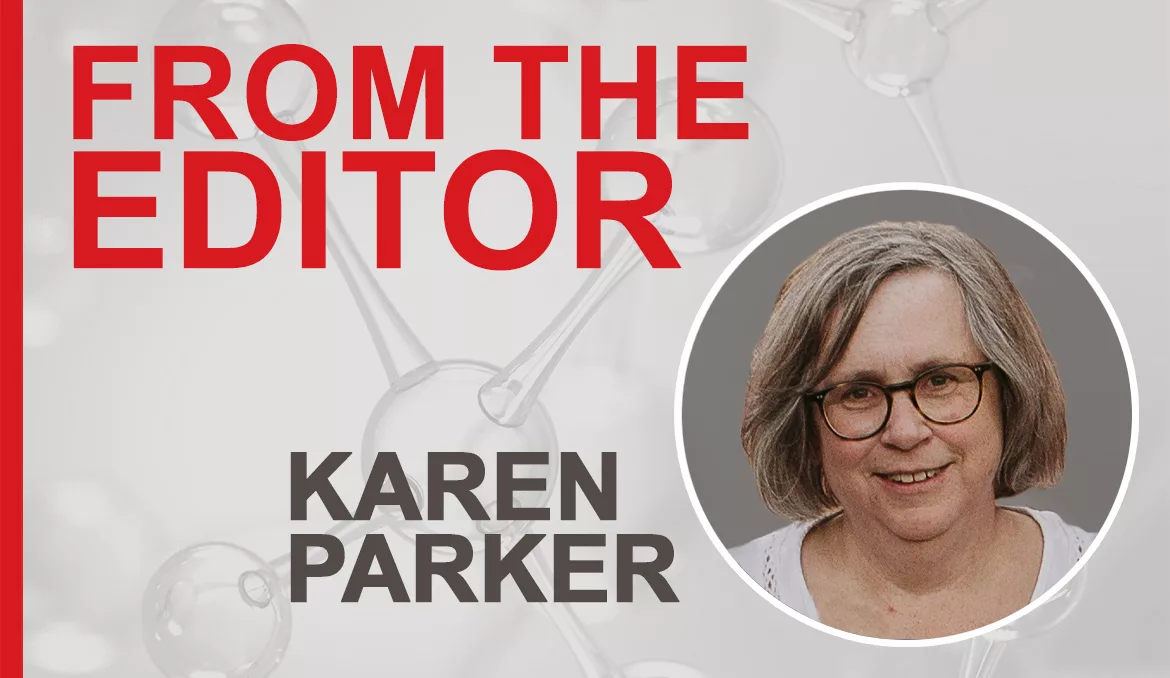From the Editor
Cooperation Leads to New Tool for European Tape Industry
A cooperation between Afera and the German Adhesives Association will result in a new tool for liquid adhesives and tape manufacturers.

Does cooperation encourage innovation? This question has been considered in so many settings, in industry, academia and governments, for starters. As I watch people I know navigate the ins and outs of graduate studies and then work in industry, cooperation seems to be an important element. Certainly, working in an atmosphere that is focused almost solely on competition can be a motivator to get things done. On the other hand, the sharing of ideas and information works as an incubator for new and possibly better innovations. Two researchers with very different approaches to science, one who is very careful and meticulous about each step of his experiments but because of that is less likely to design a bold, perhaps outside-the-bounds experiment, might be nicely paired with a scientist who is less meticulous in her approach but more inclined to propose an out-of-the box way of testing a new idea. Both approaches are necessary to create good science, and pairing people with complementing strengths can magnify each one.
In more global terms, cooperative endeavors within science have led to some great successes. One example is CERN, the European Organization for Nuclear Research. Home to the Large Hadron Collider, the idea of the laboratory was conceived after World War II as a way for countries who had been at war to cooperate and engage in scientific research. In reading about CERN, I learned of another, more down-to-earth example of scientific cooperation. The Soil Map of the World began development in the 1960s. At the time, there was concern about soil erosion and the need for a comprehensive appraisal of global soil resources. Over a 20-year period and through cooperation among many soil scientists from different countries, this global overview of the plant’s soil resources was created. It was, until recently, the only resource of its kind.
Of course, ASI is not about soil science or nuclear science. But I did learn of something interesting happening in the European tape industry when I attended Tape Week last spring. Afera, the European Tape Association, and the German Adhesives Association (IVK), are developing a Product Carbon Footprint (PCF) tool for harmonized PCF calculation of adhesives and adhesive tapes. Development of the tool has been a process that, among other things, involved a series of workshops where participants from Afera member companies discussed industry-specific model processes, raw material clusters, data requirements, and collection processes needed for the development of the new tool. The associations are now working with a specialized provider of sustainability consulting services to finalize the raw material clusters and build the database needed to set up the tool. Once it is developed, the tool will be available to adhesive tape manufacturers who are Afera members. Afera expects that the tool will become an industry standard, as it will be compatible with existing data and methods and will be “broadly applicable to all kinds of adhesive tapes, surface protection films and analogous products.”
Afera began this project with the goal of ensuring that its member companies will have the resources they need to determine PCF values in a “straightforward, harmonised, affordable manner.” This, in turn, will give businesses the tools they need to meet demand from customers for information about their products. It will also allow companies to comply with legal requirements coming from the EU and other countries.
The association stated in a press release, “The AFSP was set up with cooperation at its heart to solve problems that are too big for one single company to tackle. Joining forces with the liquid adhesive industry to develop a common approach and solution to calculate the environmental impact of adhesives and adhesive tapes is one such example.”
This project will provide value to Afera members, helping them do business more efficiently and sustainably. I spoke with Evert Smit, the president of Afera, last spring for a Bonding with ASI podcast. He had many interesting things to say about the future of the tape industry. Here is a link to the podcast, to learn more.
This issue of ASI has several articles covering adhesive tape. Articles include: a very interesting technical piece by Bostik about how tackification and coating method impact the effectiveness of UV-cured hot-melt pressure-sensitive adhesives, research out of Virginia Tech where scientists have used the ancient Japanese art of paper cutting to increase the bond of adhesive tape, and an article about a new pipe repair technology that uses resin-impregnated fibers wrapped directly around a pipe defect. Thanks for reading, and please email me at Parkerk@Bnpmedia.Com with your comments and suggestions for topics we can cover in upcoming issues!
